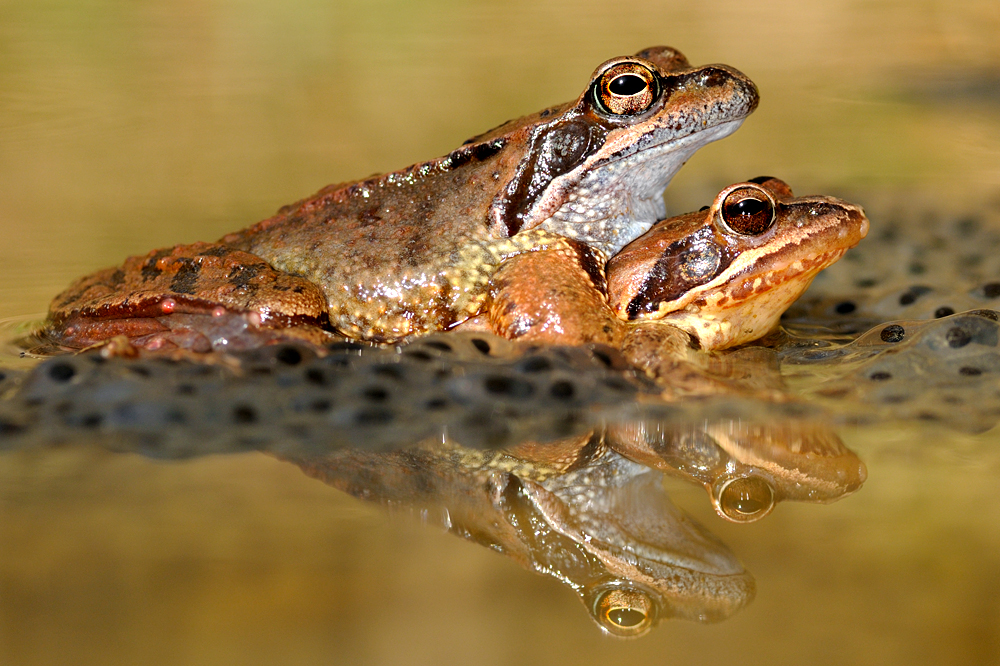Pondlife: Cheshire’s many ponds and marl pits are home to frogs, newts and toads
It’s a quirky but important fact that Cheshire has more ponds than any other county in England – as a quick look at the larger scale Ordnance Survey maps will soon confirm.
Marl pits
The majority are flooded marl pits, dug out originally by gangs of wandering contractors. Marl pits can be recognised by their small size and regular shape, with three steep sides complemented by a shallower access ramp.
Marl pits are especially common along the Sandstone Trail on the low-lying, heavier, clayey soils between Utkinton and Beeston.
Surviving marl pits provide valuable habitat for fish, frogs and newts, as well as water birds such as moorhens, coots and herons.
‘Primitive Fertiliser’
Long before the use of lime and modern artificial fertilisers, Cheshire’s poorer soils were often ‘sweetened’ with a natural fertiliser called marl.
Marling is an ancient technique first practiced by the Celts. It’s a laborious process that involves digging out and spreading the naturally occurring lime-rich sub soils, or marls, that underlie much of Cheshire.
A vast ice sheet originally carried the marls here during the last Ice Age. Their calcareous nature is due to the crushed shells they contain, scoured from the ancient sea floor.
As a reminder of this now obsolete practice, several fields on the Trail at Utkinton, for example, retain old names like ‘Marl Wood’ or ‘Big Marled Wood’.


